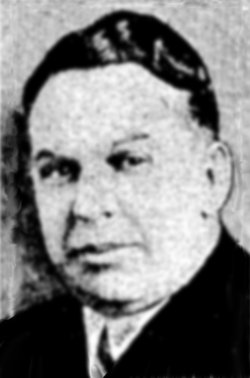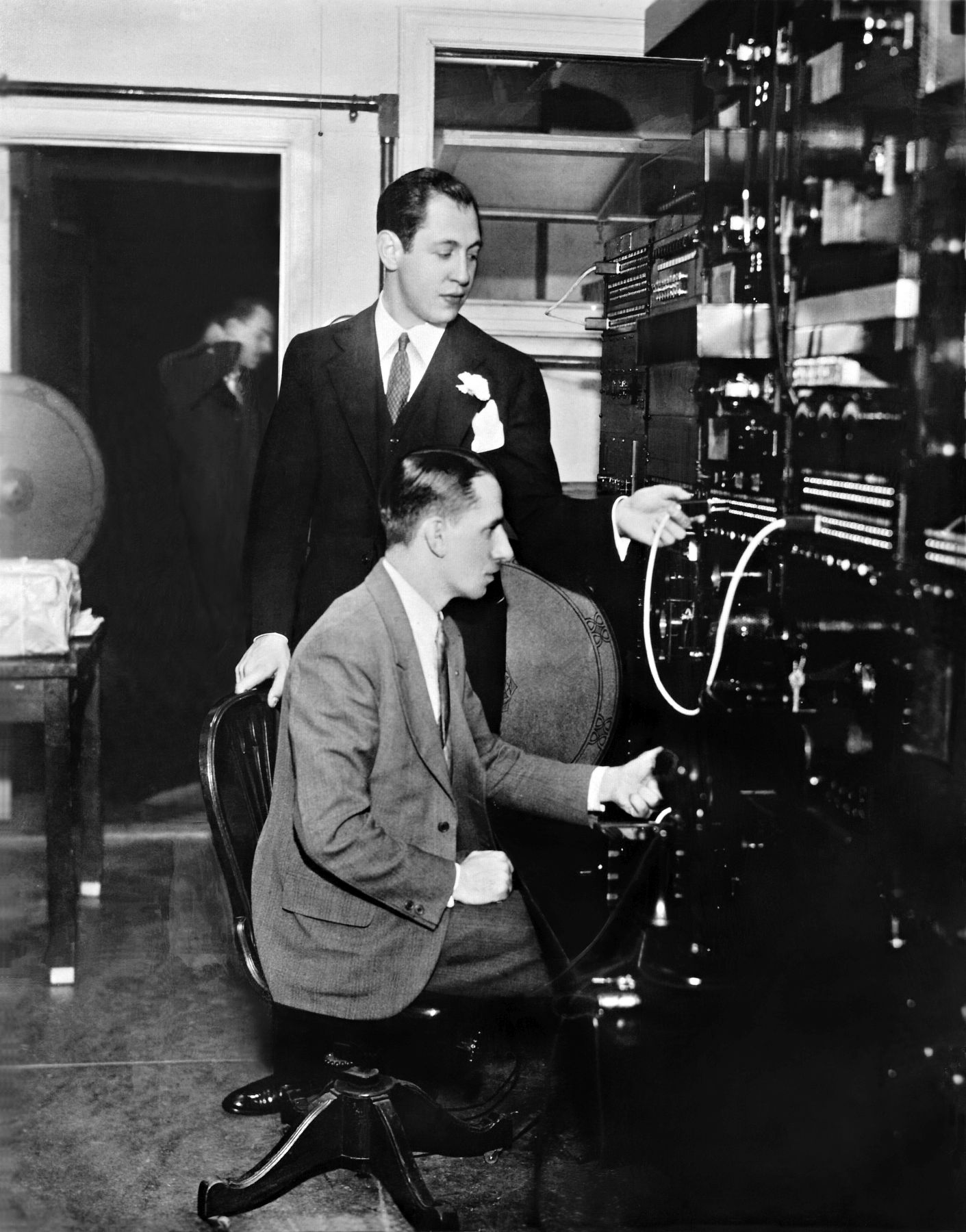America's history through the lens of 20th century broadcast media
Copyright 2020 Greenstone Media Consulting, LLC
American Broadcasting Company - Seattle - 1929
East and West

G A. Coats

Washington Star, November 1, 1928

Paley making "the connection"
to ABC
to ABC
It is now hard to understand Linden’s thinking in
taking his next steps so we are left to speculate.
On August 25, 1928 Linden announced the opening of ABC New York offices at 119
West 57th Street. The press statement also reported that George A. Coats had
been named ABC’s Eastern Representative and Frederick C. Dahlquist ABC’s general
manager. While Coats was working from the New York location Dahlquist may
have been at KYA in San Francisco. But in order to understand Linden’s opening of
New York quarters one needs to look at another network - the Columbia
Broadcasting System.
Coats was an entrepreneur and has been described as someone whose principal
interest was making money without having much attachment to
any particular field in which it was generated. Radio was new
and thriving and, while his money had been earned in other
arenas including paving equipment, he apparently saw radio as
promising. The National Association of Broadcasters’ Fourth
Annual Meeting was held on September 14, 1926, at which Coats
made a huge splash in a fiery speech opposing moves by the
American Society of Composers, Authors and Publishers (ASCAP)
for radio performance fees. David Sarnoff was then in the midst
of planning for the National Broadcasting Company (NBC) launch
two months later and would have attended. Likely, artist representative Arthur
Judson was also present. Judson was then pitching Sarnoff to establish an artists
bureau which he hoped would furnish talent to the NBC – a plan of which Sarnoff
had been encouraging. Judson may already have known Coats as they had mutual
friends through the New York Philharmonic which Judson managed. In any event,
Judson and Coats incorporated the Judson Radio Program Company on September
26 intending to supply programming to NBC.
Following the formal announcement of NBC’s launch, Judson returned to Sarnoff to
move his venture along and, to his surprise, was rebuffed. Sarnoff liked the idea
but had decided to take Judson’s plan and create an in-house division of NBC for
that purpose. A stung Judson then retorted that he would start his own network
which prompted a skeptical laugh from Sarnoff.
Judson and Coats (along with 2 other principals) incorporated United Independent
Broadcasters (UIB) on January 27, 1928 and set about establishing a network to
compete with NBC and utilize their talent company’s artist services.
Coats was a promoter – pure and simple. He calls to mind something akin to the
Professor Harold Hill character in Meredith Willson’s “The Music Man”. Willson had
actually been hired by Linden for the KJR/ABC staff in 1928 although there is now
no basis for believing that the Hill character was even partially based upon Coats.
In any event, UIB was nothing but an incorporation document in February, 1928
when Coats went on the road to find affiliated stations and money to launch the
network. Ultimately, he persuaded the Columbia Phonograph Company to invest
$163,000 in the venture and UIB and Columbia jointly caused the incorporation of
the Columbia Phonograph Broadcasting Corporation (CPBC) on April 5. The plan
was for Columbia Phonograph to invest its $163,000 in the new CPBC which would,
in turn, sell advertising to sponsors on the new network the funds from which
would repay Columbia Phonograph’s original $163,000 investment.
Coats was partially successful. Getting stations to affiliate with a network which
had no programming and no public position wouldn’t have been easy and yet he
did secure affiliations with 16 stations. Raising capital proved harder and CPBC
limped onto the air on September 18, 1927 with Coats scaring up capital wherever
he could find it over the next 11 months. However, it was clear the new network
would soon fail for lack of financing.
Likely during the summer of 1928 Coats left for Philadelphia pitching purchase of
the network to various parties which resulted in Congress Cigar Company family
interests making a significant investment. A young family member, William Paley,
had previously dabbled with radio advertising for the company’s La Palina Cigar
division, had thus become interested in radio. Recognizing the family's
investment, he was appointed president of the network in September, 1928 and,
fairly promptly, renamed the network the Columbia Broadcasting System.
So Coats’ perseverance and salesmanship saved CPBC and launched CBS. Linden
must have been both impressed and attracted by Coats’ proven ability to snatch
salvation from disaster. Clearly hoping Coats would work the same magic, he
installed Coats in ABC's New York office as the network's Eastern Representative.
For reasons that are not now entirely clear, Linden also set up a separate
corporation, the Allied Broadcasting Companies, Inc.(All-BC) to manage ABC’s
interests for matters “as far West as Chicago”. While it isn’t clear how early Coats
was formally brought into Linden’s orbit, by May, 1928 Linden had also brought
Eric H. Palmer into the fold.
Palmer had a durable resume. He was in charge of advertising for the
Freed-Eisemann Radio Corporation, a major radio manufacturer located in
Brooklyn, NY, and was a frequent contributor to publications like Radio World,
Radio Digest, Radio Doings and similar publications. He was president of the
Brooklyn Press Club and was also appointed the City of Brooklyn’s official “radio
negotiator” for radio matters before that city. Palmer was also occasionally an
official representative for Freed-Eisemann and general radio industry matters in
Europe. So, Palmer had a strong position in the New York radio industry in the
1920s.
By 1928, however, Palmer had left Freed-Eisemann and was the publicity director
for the Cigar Institute of America in which capacity he might well have known Bill
Paley. Palmer’s professional roots seemed more in radio than tobacco, however,
so he must have been intrigued Linden’s emerging network.
On November 1, 1928 Linden formally incorporated Allied Broadcasting Companies,
Inc. (All-BC) with offices in the same New York location originally announced for
the American Broadcasting Company. It is not clear
in which state All-BC was incorporated although the
incorporation announcement was carried in the
Washington, D.C. “Star” newspaper. Linden was
the new corporation’s president and, by November
17, Eric Palmer was being identified as its
vice-president. Likely, Linden thought Palmer could be helpful in lining up
affiliated stations and for general representation of ABC’s interests in the east
while Coats’ would seemingly have been more responsible for securing investment
capital.
It is hard to know why Linden decided to establish a second corporation. The use
of the plural (Companies) in the All-BC name suggests a potentially broader vision
than ABC’s network business. Or perhaps Linden or Coats wanted a more east
coast-focused enterprise in which to invest their energies. Or perhaps Linden
believed it would be easier to attract capital for the radio network with a more
solid eastern office and staff. Press coverage of the relationship between ABC and
All-BC is exceedingly vague and both Palmer and Coats were variously described
as handling both ABC’s and All-BC’s eastern interests.
Linden and Coats were both already involved with Linden's venture by the time
Paley took over Columbia. So, since Columbia had no western affiliates, its was
doubtless Coats who suggested to Paley that ABC’s
western stations would provide Columbia western
outlets and, indeed, such a deal was made.
Following what were probably seen as tests
beginning October 9, 1927, the Columbia-ABC
“connection” was formally inaugurated on January
9, 1929. .
It’s possible that Linden envisioned some type of
formal or informal alliance with Paley/Columbia
although it is somewhat difficult to envision that
plan in light of Linden’s establishing his own
offices and personnel on Paley’s doorstep in
Manhattan.
From this point forward ABC and All-BC seem to
have traveled somewhat parallel paths with occasional, confusing intersections.


.png)